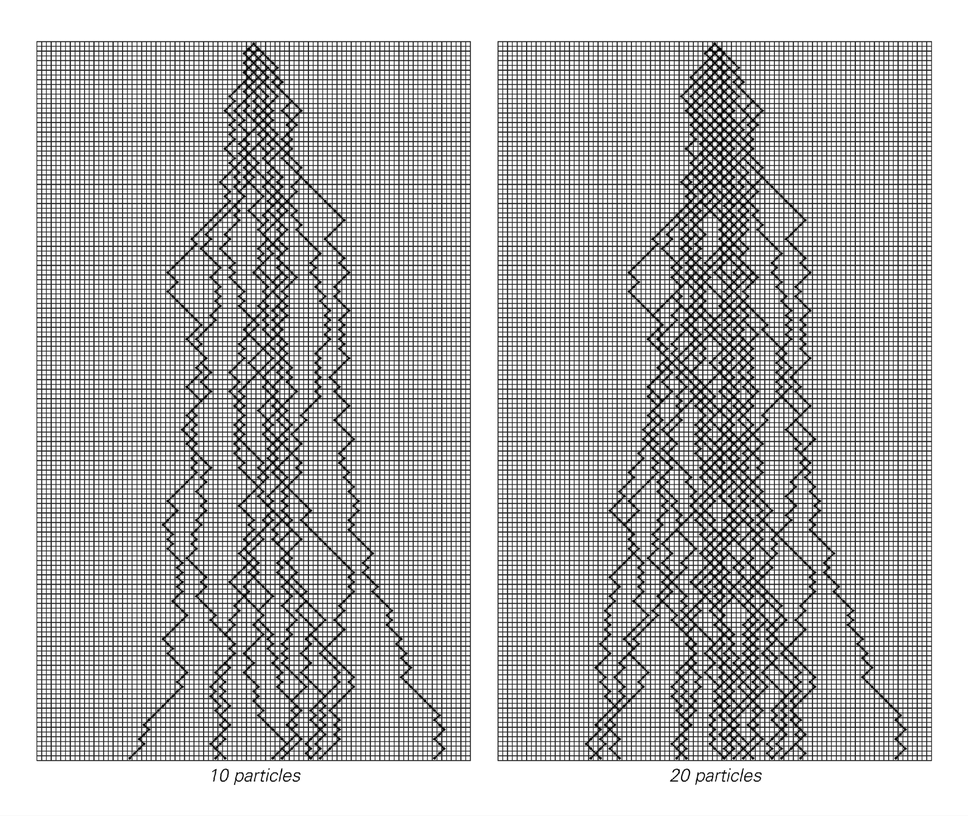continuous form, and shows no trace of the underlying discreteness of the system; the randomness has in a sense successfully washed out essentially all the microscopic details of the system.
The pictures at the top of the facing page show what happens if one uses several different underlying rules for the motion of each particle. And what one sees is that despite differences at a microscopic level, the overall distribution obtained in each case has exactly the same continuous form.
 |  |

The distribution of positions by reached particles that follow random walks. The top left shows three individual examples of random walks, in which each particle randomly moves one position to the left or right. Even though the individual particles are discrete, the pictures show that when a large number of particles are considered, the overall behavior obtained seems smooth and continuous.



